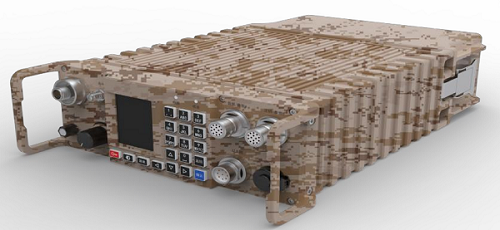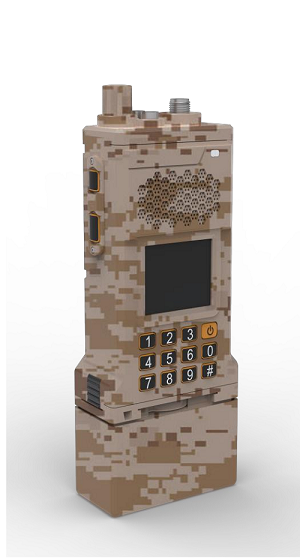Ultra-short Wave Over-the-horizon DigitalCommunication Radio
1. System Overview
The radio leverages the reflection and super-refraction mechanisms of wireless signals in the troposphere. By employing hybrid digital coding technology, adaptive low-noise
coherent and non-coherent demodulation techniques, channel frequency domain equalization technology, and innovative RF channel design, it achieves sufficient signal-to-noise ratio (SNR) gain under extremely weak signal conditions, delivering digital voice available receiving sensitivity as high as -127 dBm. Breakthroughs in ultra-weak field strength (-127 dBm) signal demodulation and channel error correction coding enable over-the-horizon communication.
(1) Handheld digital radio: 10W power with 0.55m folded steel whip antenna; Plain communication range: 60 km Shore-to-sea communication range: 160 km.
(2) Manpack digital radio: 20W power with 1.1m folded steel whip antenna; Plain communication range: 80 km; Shore-to-sea communication range: 220 km.
(3) Vehicle/Marine-mounted digital radio: 40W power with 2.4m fiberglass antenna; Plain communication range: 120 km; Shore-to-sea communication range: 300 km.

Figure 1 Ultra-short wave over-the-horizon manpack digital communication radio

Figure 2 Ultra-short wave over-the-horizon handheld digital communication radio

Figure 3 Ultra-short wave over-the-horizon on-board digital communication radio
2. System functionality
(1) Main functions
In addition to basic voice and data services such as individual calls, group calls, broadcast calls (all-call), short data, status messages, and packet data, the system also supports a wide range of supplementary services including priority levels, call monitoring, forced release/forced insertion, and more.
(2) Networking Capabilities
Based on an all-IP network architecture, it supports multiple networking links including IP and E1. With a unique air interface design, it enables wireless self-organizing networks for base stations. It supports integrated networking of links and wireless self-organizing networks, offering flexible, simple, and convenient deployment while adapting to a wide range of scenarios.
(3) Terminal secondary wireless extension relay The enhanced terminal is equipped with a secondary relay function to achieve fixed or mobile extended signal coverage areas.
(4) Robust System Management Capabilities Supports diverse network management functions, including user management, performance management, configuration management, security management, alarm and fault management. Enables remote management of base station equipment over IP networks.
(5) Secure Communication Functionality Provides voice and data encryption to ensure communication content is protected from interception by external networks (or non-registered wireless terminals).
3. Main indicator parameters
The main performance specifications of the Ultra-Short Wave Beyond Line-of-Sight Digital Communication Radio are as follows:
(1) Operating Frequency: 350MHz–390MHz;
(2) Modulation: 4FSK;
(3) Multiple Access: FDMA;
(4) Channel Bandwidth: 12.5KHz, Data Rate: 1200bit/s;
(5) Modulation Limitation: ≤2.5KHz;
(6) Voice Coding: SELP;
(7) Receiver Sensitivity: ≤-128dBm @ 5% BER;
(8) Transmit Power:
A. Ultra-Short Wave Beyond Line-of-Sight Digital Handheld Radio: 10W/5W;
B. Ultra-Short Wave Beyond Line-of-Sight Digital Backpack-Mounted Radio: 20W/10W;
C. Ultra-Short Wave Beyond Line-of-Sight Digital Vehicle/Ship-Mounted Radio: 40W/20W.
(9) Adjacent Channel Selectivity: ≤-60dB @ 12.5KHz;
(10) Spurious Suppression: ≥70dB;
(11) Intermodulation Selectivity: ≥70dB;
(12) Blocking: ≥90dB;
(13) Operating Temperature: -25℃ to +60℃;
(14) Weight:
A. Ultra-Short Wave Beyond Line-of-Sight Digital Handheld Radio: ≤1.5kg;
B. Ultra-Short Wave Beyond Line-of-Sight Digital Backpack-Mounted Radio: ≤3kg;
C. Ultra-Short Wave Beyond Line-of-Sight Digital Vehicle/Ship-Mounted Radio: ≤5kg.



